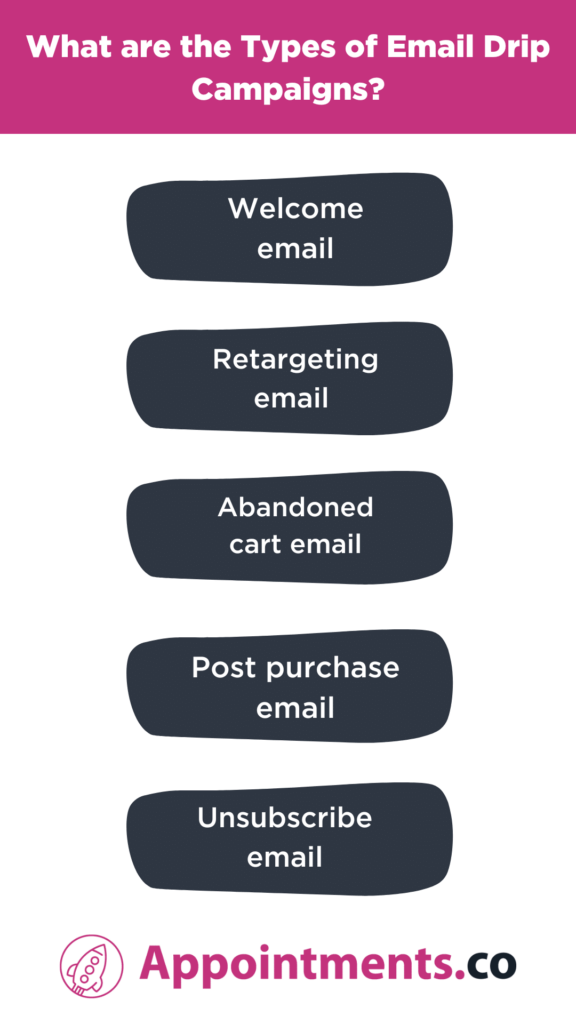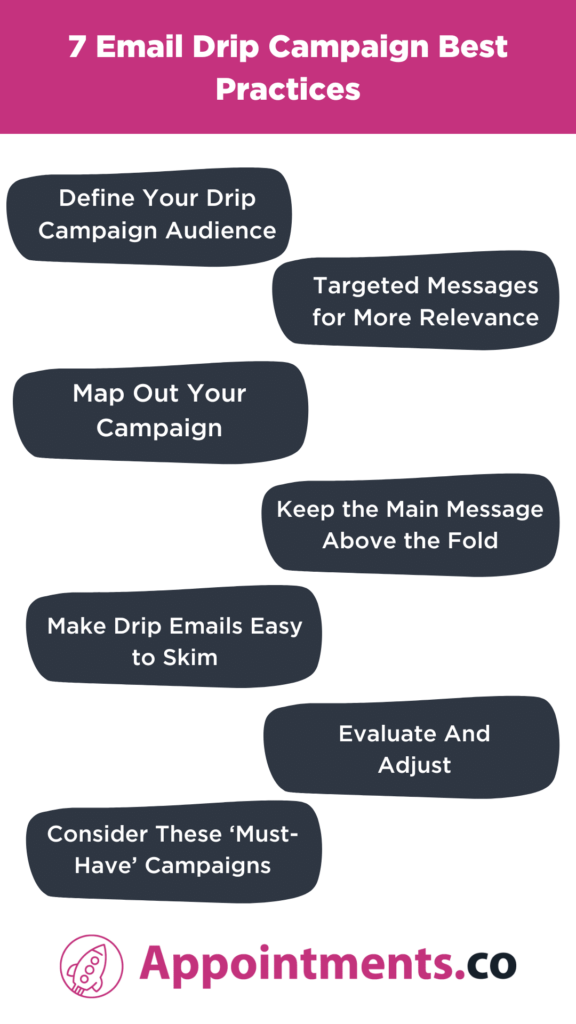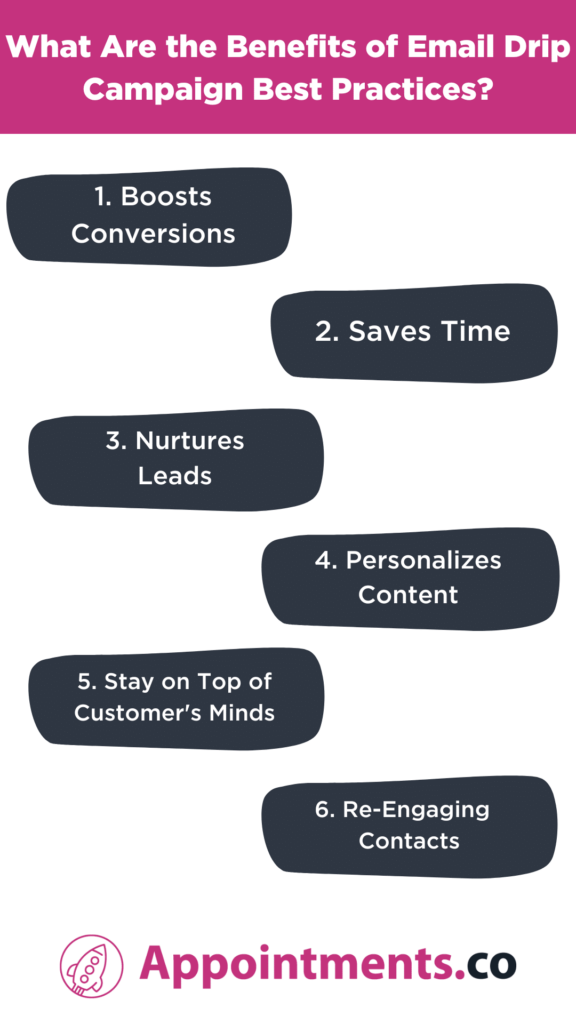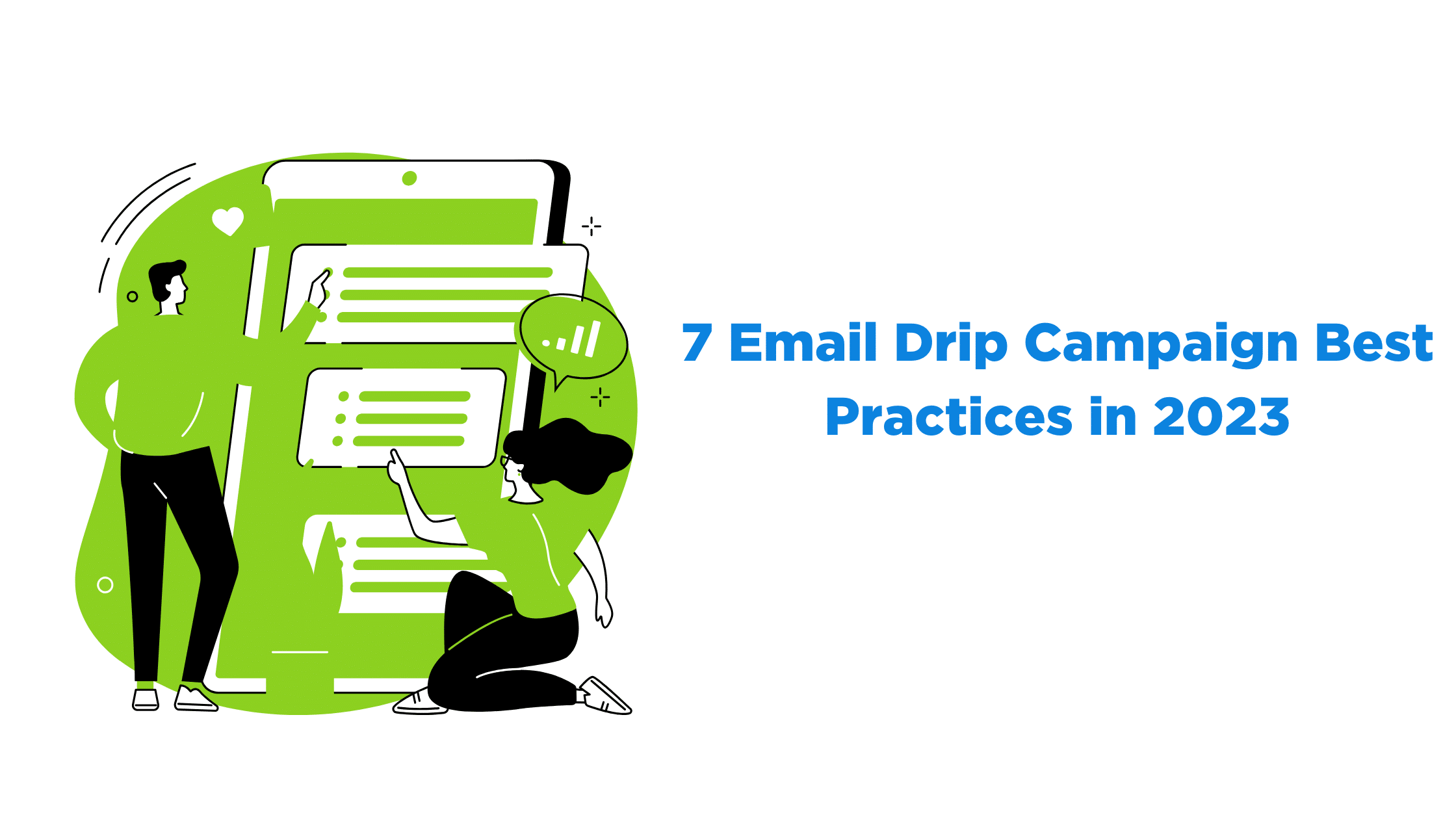Unlocking the potential of email drip campaigns can significantly enhance your marketing efforts. These email drip campaign best practices keep your brand top of mind, nudge customers towards taking action, and provide valuable insights into their behavior. Whether it’s recovering abandoned carts or nurturing leads, drip campaigns offer a personalized and automated approach to engaging with your audience.
In this blog, we’ll delve into the benefits of email drip campaigns, explore some best practices, and help you make the most of this powerful email marketing strategies. Let’s get started!
What Is a Drip Campaign?
Ever heard of a drip campaign? It’s a savvy marketing strategy that allows you to automatically send a sequence of emails based on specific conditions. It’s a powerful way to engage and nurture your customers.
- In the initial email, you can send a warm welcome message that introduces your brand and provides a clear explanation of how your rewards program works. It’s a friendly way to kick off the engagement and ensure your subscribers understand the value of being part of your drip marketing campaign program.
- Send a second email to subscribers who haven’t made a purchase yet, offering a special promotion to double the points they receive in your loyalty program. It’s a compelling way to encourage them to take action.
- In the third email, personalize the content with product recommendations specifically tailored to the customers. Include a strong call-to-action (CTA) in your drip marketing campaigns, prompting them to use their points. It’s a great way to boost engagement and drive conversions.
Drip email campaigns are meticulously planned and scheduled to deliver messages to the right people at the perfect time. Unlike newsletters, these campaigns are triggered by inactivity or the specific actions of individuals. They are also known by different names, like automated marketing, lifecycle emails, and automated email campaigns.
What are the Types of Email Drip Campaigns?
There are 5 types of email drip campaigns, they are:

- Welcome email drip campaign
- Retargeting email drip campaign
- Abandoned cart email drip campaign
- Post purchase email drip campaign
- Unsubscribe email drip campaign
7 Email Drip Campaign Best Practices

To not only encourage readers but also to nurture leads, qualified leads or non-qualified leads in the sales funnel, convince prospects of future promotions in the sales cycle, and make existing and new subscribers respond to the email sequence email drip campaign best practices are crucial.
It can be any type of email like promotional emails or follow-ups with pre-written messages that should contain valuable information for the prospective customers at just the right time. This way you can use these lead-nurturing emails or re-engagement emails to create relevant messages according to your business model to get more sales.
1. Define Your Drip Campaign Audience
Creating custom drip campaigns is one of the email drip campaign best practices that requires careful rule-setting to avoid conflicts and confusion. For instance, when a customer registers, but hasn’t completed their profile, it’s important not to send automated reminders at the same time as the welcome series. Overwhelming new customers with too many emails can decrease their engagement. Striking the right balance is critical to providing a seamless and enjoyable customer experience.
2. Targeted Messages for More Relevance
Ensuring your emails are relevant and personalized to address your customers’ current needs is one of the email drip campaign best practices. For cart abandonment emails, address any concerns they may have encountered, like expensive shipping or unclear returns policy. Highlight important factors like free delivery and returns to encourage purchases. In onboarding emails, emphasize the reasons people signed up and highlight perks to reaffirm their decision.
3. Map Out Your Campaign
Before launching your email campaign, keep these email drip campaign best practices and skills in mind:
- Define your overall goal.
- Identify the triggers that will initiate your drip campaign.
- Decide on the number of emails in your sequence.
- Personalize your content for maximum impact.
- Know when to remove customers from the drip sequence.
Also, make sure to include all emails, SMS, and other messages in your plan to prevent overlap. Avoid situations, like receiving a discount coupon for a product you purchased last week. It’s all about delivering a seamless and relevant experience to your customers.
4. Keep the Main Message Above the Fold
One of the email drip campaign best practices is to achieve the goal with each drip email of conveying a message that convinces our subscribers to take action. So, we need to ensure that our subscribers will not miss it.
5. Make Drip Emails Easy to Skim
To increase email readability, it’s important to acknowledge that most recipients simply skim through the content rather than reading it thoroughly. Regardless of how informative the content is, many subscribers prefer to quickly find what interests them.
To cater to skimming readers, it’s crucial to structure your emails for easy consumption. This can be achieved by:
- Using small paragraphs
- Incorporating headlines and subheadlines.
- Employing bullet point lists.
- Including visuals, like images and GIFs.
- Utilizing ample white space.
By implementing these skimmable elements, you can enhance the readability and engagement of your emails, capturing the attention of subscribers even if they are scanning through the content.
6. Evaluate And Adjust
Drip email campaigns are convenient and time-saving as once set up, they work for you 24/7. However, it’s crucial to monitor their results and make adjustments as needed. Marketers often use Google Analytics to track conversion performance, utilizing UTM parameters.
Continuous improvement of drip campaign emails with a few best practices is necessary to achieve consistent success. Testing different elements like text, imagery, and information helps identify what resonates best with customers.
7. Consider These ‘Must-Have’ Campaigns
Meeting customer expectations is critical, and a welcome drip email campaign can help. Sending timely and informative welcome emails immediately after sign-up builds a strong relationship.
An abandoned cart campaign is also valuable. Gentle reminders sent at the right times can recover up to 33.9% of orders, boosting sales.
Other effective drip campaigns include customer reactivation, order confirmation, and personalized automation for events like birthdays. These campaigns enhance engagement and satisfaction.
What Are the Benefits of Email Drip Campaign Best Practices?
Email drip campaign best practices have several advantages that can enhance your email marketing game. Let’s explore some of the benefits you can leverage.

1. Boosts Conversions
Email drip campaign best practices simplify the process of guiding consumers through marketing and sales funnels, increasing the chances of achieving successful conversions. The primary objective of a drip email campaign is to encourage contacts to take specific actions.
Make sure each email in your drip email campaign sequence includes a clear call-to-action (CTA) that prompts your leads to take the next step in the funnel.
2. Saves Time
With marketing automation, you can rely on the right drip campaign tool and drip campaign software to handle the hard work for you. Instead of sending emails manually, you can create your content in advance and let it be delivered automatically to your contacts. This ensures customization, efficiency, and timely delivery to your subscribers.
3. Nurtures Leads
Email drip campaign provide information and guidance to interested contacts, nudging them toward making a purchase. By customizing your email drip campaign best practices based on the customer journey, you can increase engagement and deliver timely messages to your subscribers.
4. Send Personalized and Relevant Content
Drip campaigns are different from mass emails because they focus on sending personalized and relevant content to specific individuals. You can automate these campaigns with email drip campaign best practices based on audience segments or particular actions taken by your contacts. By doing so, you ensure that your subscribers receive appealing and tailored content that matches their interests.
5. Stay on Top of Customers’ Minds
Consistent email drip campaign best practices ensure that your subscribers see your messages, even if they don’t usually engage or open the emails. This helps raise brand awareness and keeps your business at the front of your potential customer’s minds.
6. Re-Engage Contacts
Sometimes subscribers stop engaging with your emails, which can negatively impact your engagement rate and other important metrics. You must understand why they lost interest to reengage with them through email marketing services. Once you identify the reason why they lost interest in your product or service, you can run and formulate some of the email drip campaign best practices to regain their interest and reestablish a connection.
Frequently Asked Questions
1. How do you structure an email drip campaign?
Before starting an email drip campaign you need to plan the structure of your campaign and should follow email drip campaign best practices. These are some of the common ideas on how you can structure your email campaigns:
1. Describe your campaign
2. Find the purpose of your drip campaign
3. Identify your target audience
4. Provide valuable content
5. Launch your drip campaign
6. Analyze your email drip campaign
2. How many emails should be in a drip campaign?
An ideal email drip campaign can have four to ten emails as a sequence for an email marketing campaign.
3. How many days between drip campaign emails?
The ideal days or period of time that you can send your next email can range from four, seven, to fourteen days apart from the previous email.
4. How many email campaigns should I send a month?
You can send emails twice a month and then make them weekly, which is considered a good email marketing approach.
Wrapping Up
Drip email campaigns outperform bulk emails, generating 2-3 times higher performance. Combining multiple marketing channels and following email drip campaign best practices can help you increase the average purchase rate. Start with welcome, cart abandonment, and customer reactivation drip email systems as they are effective and easy to implement.
Pay attention to details, like notifications about free shipping to boost conversions for a successful drip campaign.
Ensure your copywriting aligns with the email trigger and your brand’s communication. Choose drip email tools with multiple channels for a seamless transition to omnichannel marketing.
Related Reads
- What Is Email Marketing Services – 5 Best Services Reviewed
- The 12 Best Email Marketing Strategies in 2023
- Best Guide To Elevate Your Email Marketing Skills in 2023
Illustration – Storyset



